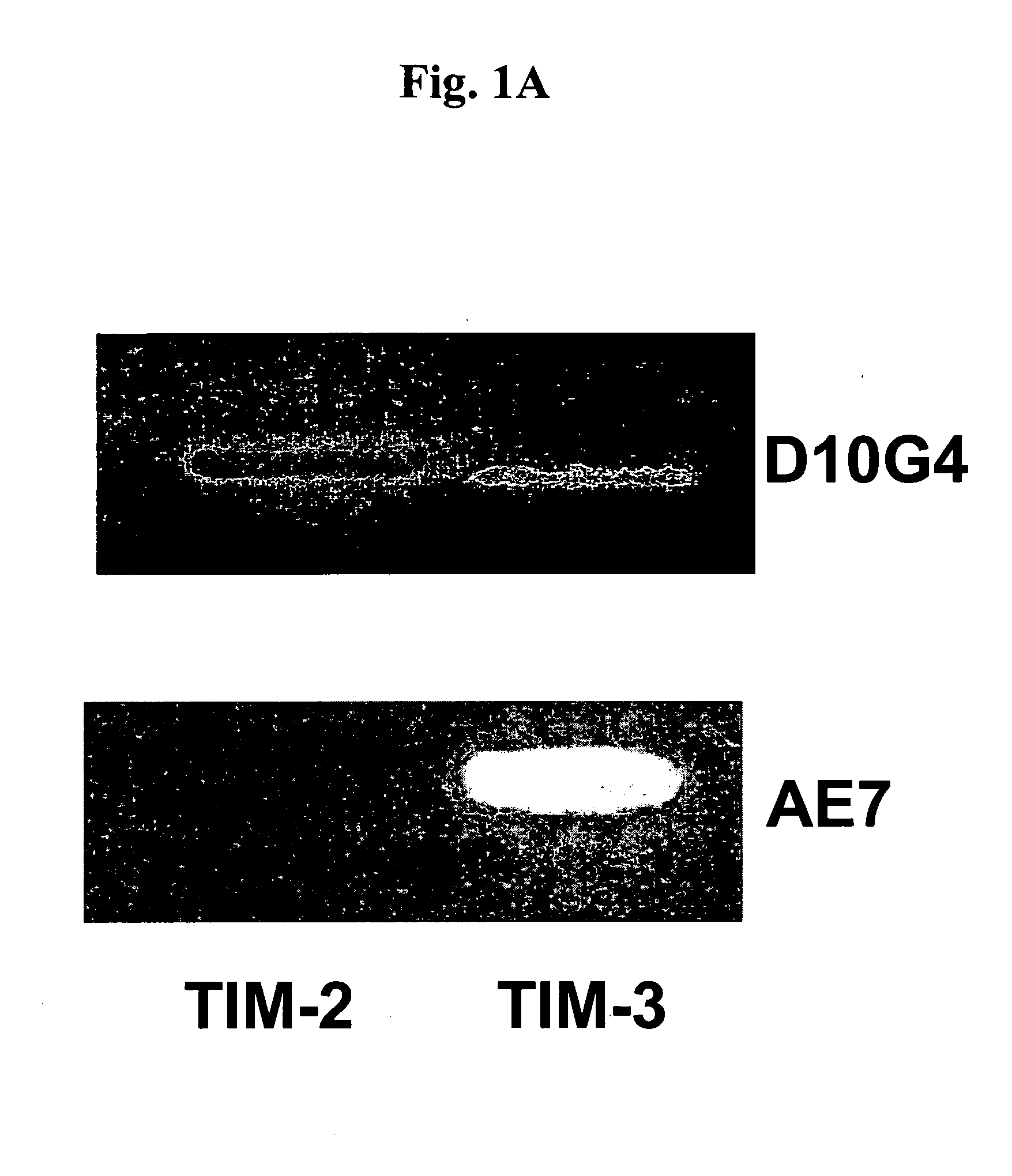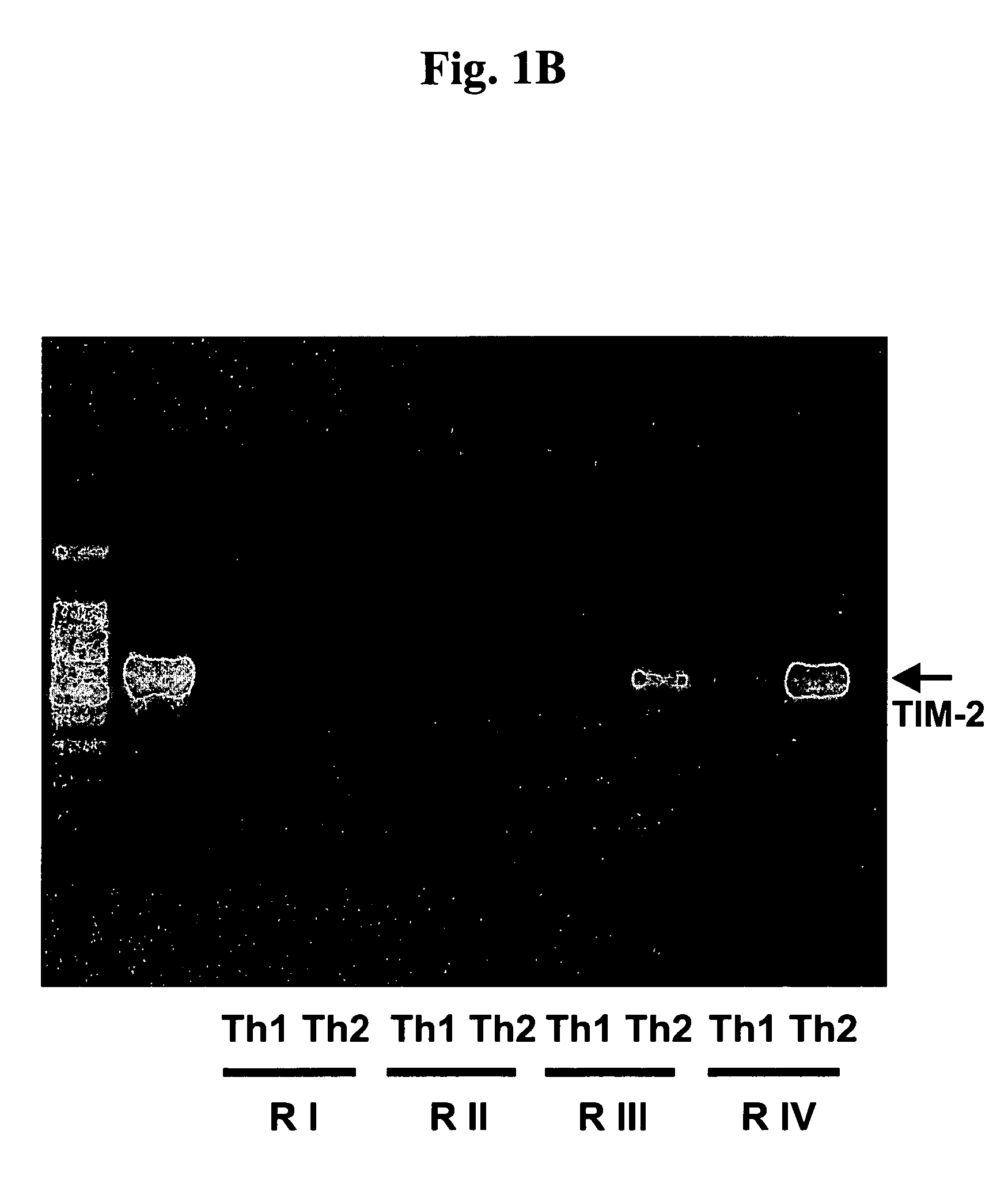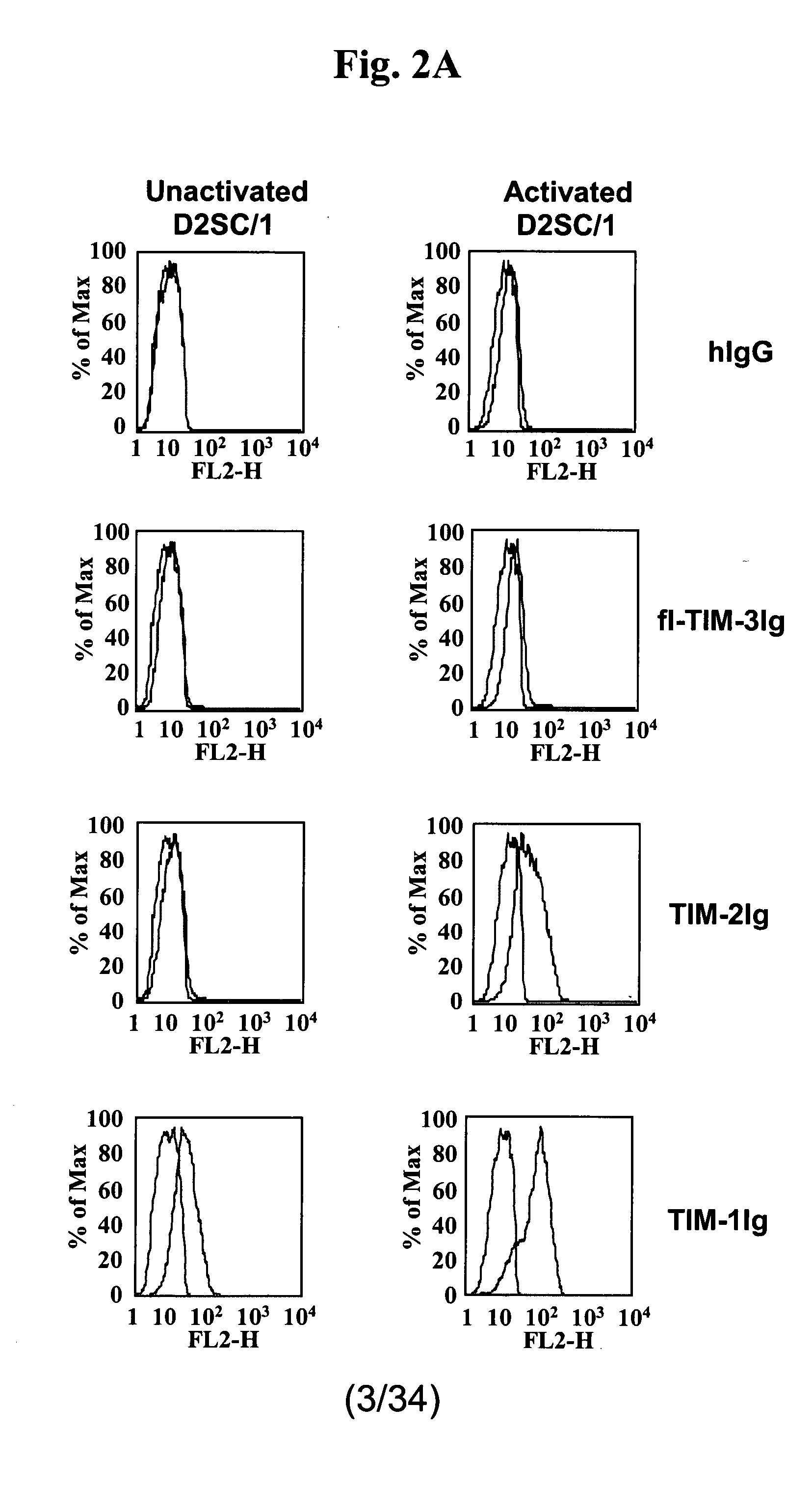Methods of modulating immune responses by modulating tim-1, tim-2 and tim-4 function
a technology of immune response and function, applied in the direction of peptide/protein ingredients, dna/rna fragmentation, fusion polypeptide, etc., can solve the problems of inability to regulate the glucose level in the blood, the economic cost of these disorders is enormous, etc., to prevent or reduce the likelihood of being afflicted, and promote or block complex formation
- Summary
- Abstract
- Description
- Claims
- Application Information
AI Technical Summary
Benefits of technology
Problems solved by technology
Method used
Image
Examples
example 1
Identification of Tim-2 Expression in Th2 Cells
[0274] In order to determine the expression of Tim-2 at the RNA level applicants utilized cycle sample semi-quantitative PCR. Tim-2 was expressed in unstimulated Th2 cells clones and not in Th1 (FIG. 1A). The level of Tim-2 message increased upon polarization of DO11.10 CD4+ T cells toward a Th2 phenotype (FIG. 1B). In contrast, the amount of Tim-2 message was undetectable to low in cells polarized down the Th1 pathway (FIG. 1B). These data suggest that Tim-2 is differentially expressed on Th2 cells rather than Th1 cells.
example 2
Construction of Tim-1Ig and Tim-2Ig Fusion Polypeptides
[0275] To identify potential ligands of Tim-1 and Tim-2 and to address the functional in vivo relationship between Tim-1 and Tim-2 and their ligand(s) applicants constructed Tim-1Ig and Tim-2Ig fusion polypeptides. In each case, the cDNA encoding the extracellular IgV and mucin domain was fused to the cDNA encoding the human IgG1 Fc tail. The Tim-2 construct was stably transfected into NS.1 cells, and the Tim-1 construct was stably transfected into CHO cells. The fusion polypeptides were purified from the resultant supernatant by column chromatography.
example 3
Expression of Tim-1 and Tim-2 Ligand on Activated Antigen Presenting Cells
[0276] In order to investigate the role of Tim-1 and Tim-2, applicants utilized the Tim-2 fusion polypeptide to identify cell populations expressing the Tim-2 ligand. Various cell lines were stained with both the Tim-1Ig and Tim-2Ig fusion polypeptides. Both unactivated dendritic cells, and macrophages demonstrated low expression of Tim-1 ligand(s). Interestingly, no quiescent populations expressed the Tim-2 ligand. However, when activated with LPS and interferon gamma (IFNγ), dendritic and macrophage cell lines upregulated the expression of the Tim-1 Ligand and induced the expression of Tim-2 ligand (FIGS. 2A and 2B). The increase in expression of Tim-1 and Tim-2 ligands was concurrent with the upregulation of MHC class II, and B7-1 and B7-2 expression on these cellular subsets. All purified T cell populations examined, whether naïve or specifically activated, stained negatively for both the Tim-1 and Tim-2 ...
PUM
| Property | Measurement | Unit |
|---|---|---|
| Fraction | aaaaa | aaaaa |
| Solubility (mass) | aaaaa | aaaaa |
| Pharmaceutically acceptable | aaaaa | aaaaa |
Abstract
Description
Claims
Application Information
 Login to View More
Login to View More - R&D
- Intellectual Property
- Life Sciences
- Materials
- Tech Scout
- Unparalleled Data Quality
- Higher Quality Content
- 60% Fewer Hallucinations
Browse by: Latest US Patents, China's latest patents, Technical Efficacy Thesaurus, Application Domain, Technology Topic, Popular Technical Reports.
© 2025 PatSnap. All rights reserved.Legal|Privacy policy|Modern Slavery Act Transparency Statement|Sitemap|About US| Contact US: help@patsnap.com



